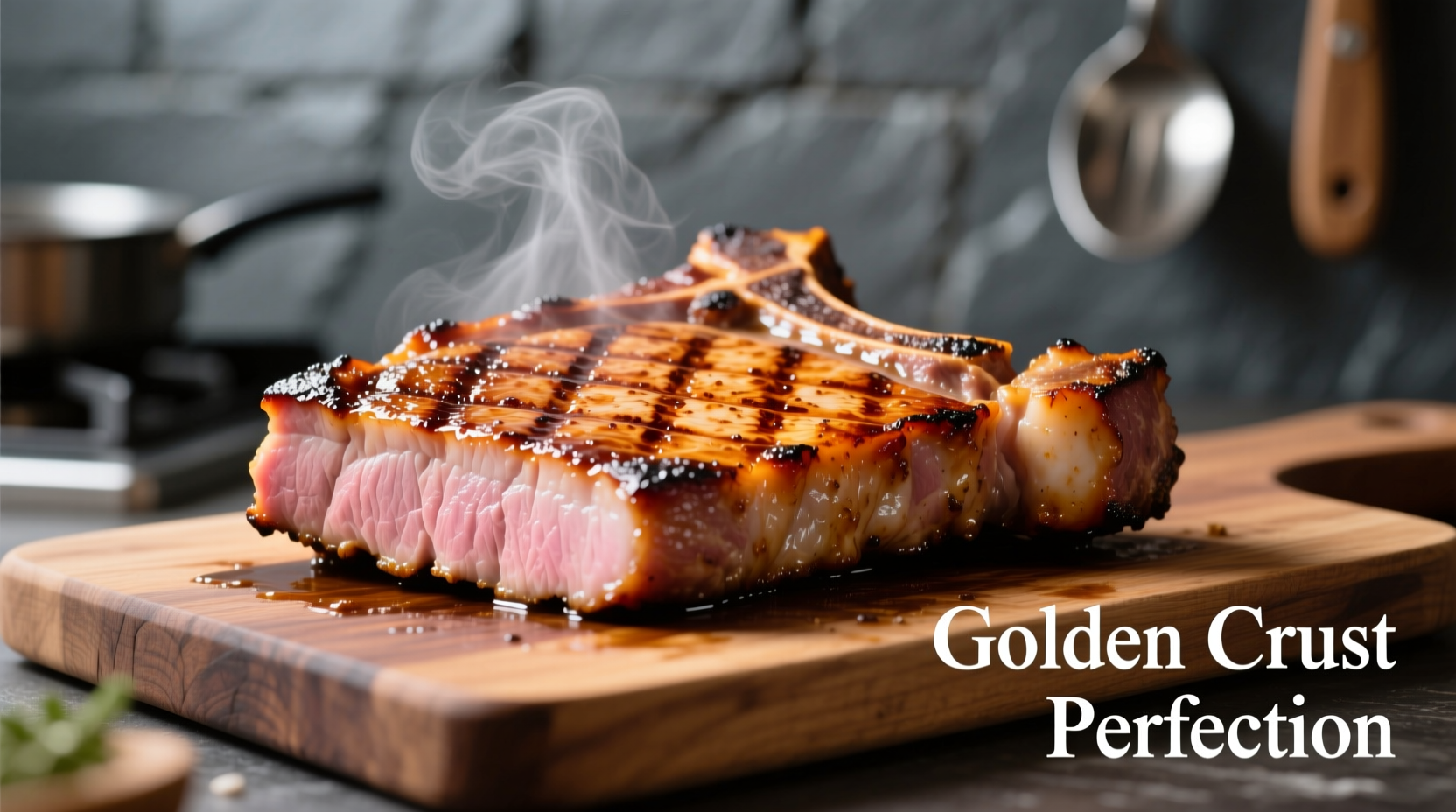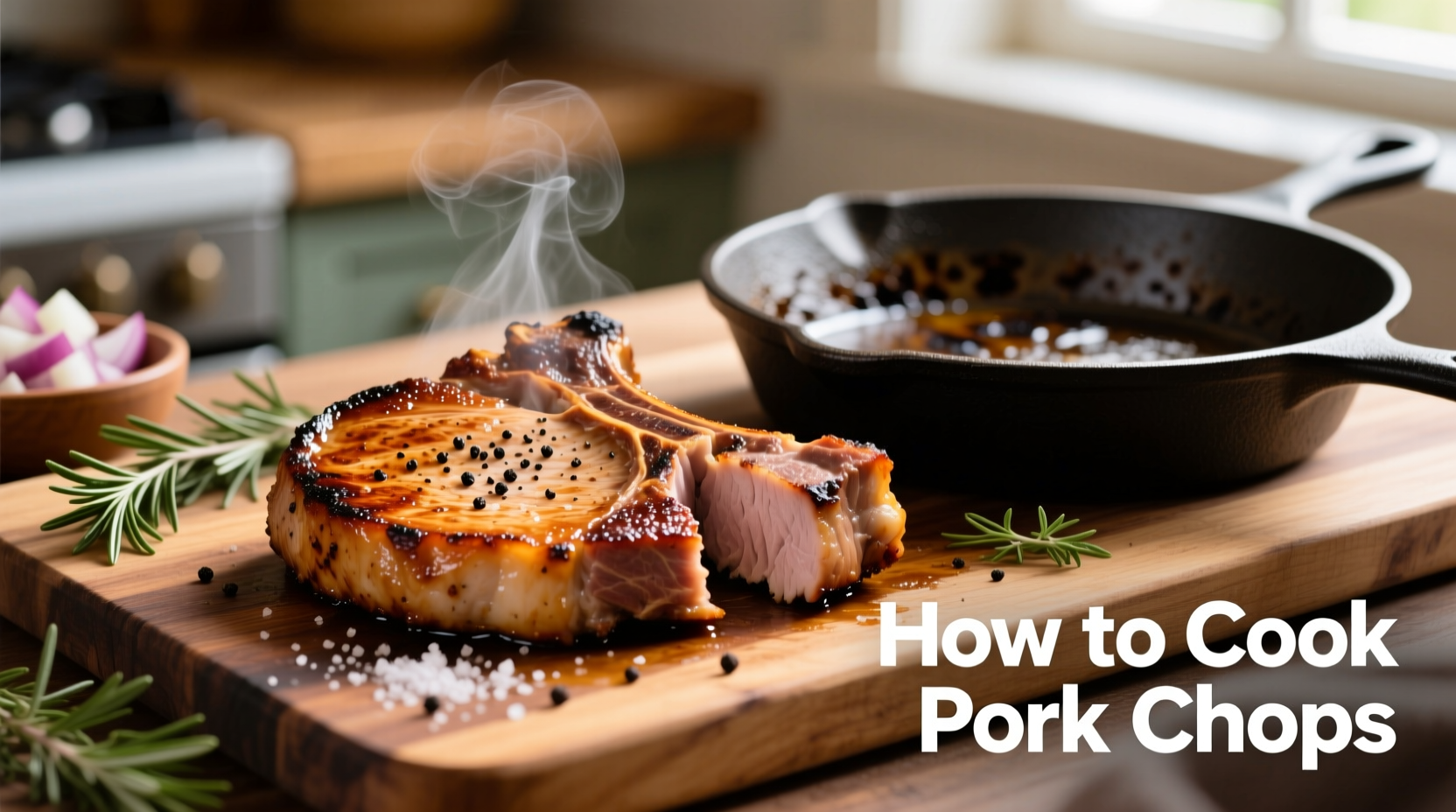Nothing ruins dinner plans faster than dry, tough pork chops. Many home cooks struggle with this cut because they either undercook it (creating safety concerns) or overcook it (resulting in disappointing texture). The good news is that with proper technique, pork chops can be incredibly tender and flavorful. This guide reveals the professional approach that guarantees perfect results whether you're pan-searing, baking, or grilling.
Selecting the Right Pork Chops
The foundation of great pork chops starts at the grocery store. Not all chops are created equal, and your cooking method should match your cut:
| Type | Best For | Thickness Tip |
|---|---|---|
| Loin chops (T-bone or center cut) | Pan-searing, grilling | Choose 1-1.5 inches thick for even cooking |
| Rib chops | Pan-searing, oven finishing | Slightly more forgiving due to marbling |
| Shoulder chops | Slow cooking methods | Not recommended for quick searing |
| Boneless chops | Baking, air frying | Requires careful timing to prevent drying |
According to USDA Food Safety and Inspection Service guidelines, thicker cuts (1 inch or more) provide more margin for error during cooking. Bone-in chops typically retain moisture better than boneless varieties due to the bone's insulating properties. Look for chops with even pink color and moderate marbling - avoid any with excessive liquid in the package, which indicates poor handling.
Preparation Techniques That Make a Difference
Proper preparation sets the stage for success. Rushing this phase leads to uneven cooking and disappointment:
- Temperature transition: Remove chops from refrigerator 30-45 minutes before cooking. Cold meat sears poorly and cooks unevenly.
- Drying the surface: Pat chops thoroughly with paper towels. Moisture creates steam instead of the desirable sear.
- Seasoning strategy: Apply salt at least 40 minutes before cooking or immediately before. The salt time allows for better penetration without drawing out moisture.
For those wondering how to cook pork chops without drying them out, consider a quick brine (30-60 minutes in 4 cups water with 1/4 cup salt and 2 tbsp sugar). This simple step enhances moisture retention, especially for leaner cuts. Professional chefs often use this technique when preparing perfect pan seared pork chops recipe for restaurant service.

Mastering the Cooking Process
The most reliable method combines stovetop searing with oven finishing - ideal for thick cut pork chop cooking time management:
- Preheat oven to 400°F (200°C)
- Heat 1-2 tablespoons oil in oven-safe skillet over medium-high heat until shimmering
- Sear chops 3-4 minutes per side until golden brown crust forms
- Transfer skillet to oven and cook 4-8 minutes until internal temperature reaches 140°F
- Remove and rest 3 minutes (temperature will rise to safe 145°F)
This two-stage approach solves the common problem of how long to cook pork chops in oven alone. Thinner chops (under 1 inch) may finish entirely on the stovetop, while thicker cuts benefit from the controlled oven environment. The critical factor is internal temperature, not time - this is why a meat thermometer is essential for consistent results.
Temperature Guidelines and Doneness Verification
USDA updated its pork cooking recommendations in 2011, lowering the safe temperature from 160°F to 145°F with a 3-minute rest period. This change, verified through extensive research by the Food Safety and Inspection Service, allows for juicier results while maintaining safety.
Here's how to verify doneness using multiple methods:
- Thermometer method (most reliable): Insert probe into thickest part. Remove at 140°F for 145°F final temperature after resting.
- Touch test: Properly cooked pork should feel firm but yielding, similar to the base of your thumb when making an "okay" sign.
- Visual cues: Clear juices (not pink) when pierced, with slight resistance when pressed.
Resting time is non-negotiable for juicy results. During the 3-minute rest, residual heat continues cooking while juices redistribute. Cutting too soon releases these precious juices onto your cutting board. This critical step addresses the common search query how to tell when pork chops are done without relying solely on guesswork.
Troubleshooting Common Problems
Even with careful preparation, issues can arise. Here's how to handle them:
- Dry chops: Usually from overcooking. Next time, reduce cooking time by 1-2 minutes per side and use a thermometer.
- Burnt exterior, raw interior: Heat was too high during searing. Use medium-high instead of high heat.
- Sticking to pan: Pan wasn't hot enough before adding chops or you moved them too soon.
- Undercooked: Return to oven at 350°F, checking every 2 minutes until 140°F internal temperature.
For those searching best temperature for cooking pork chops, remember that 145°F is the USDA-recommended safe temperature, but carryover cooking means you should remove chops at 140°F. This precise temperature management makes the difference between tough and tender results.
Serving and Storage Tips
Serve immediately after resting for best texture. Classic pairings include:
- Applesauce or apple butter (traditional complement)
- Roasted vegetables like Brussels sprouts or asparagus
- Creamy mashed potatoes or polenta
- Simple pan sauces made from fond (browned bits in the skillet)
Store leftovers in an airtight container for up to 3-4 days. Reheat gently in a covered skillet with a splash of broth to maintain moisture. For meal preppers wondering about freezing cooked pork chops, they maintain quality for 2-3 months when properly wrapped.











 浙公网安备
33010002000092号
浙公网安备
33010002000092号 浙B2-20120091-4
浙B2-20120091-4